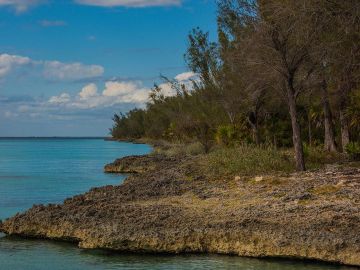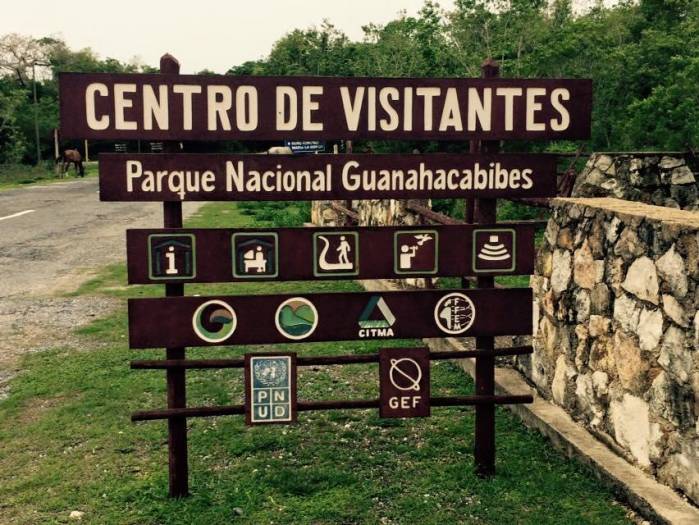
Guide to Cuba’s Nature and Biosphere Reserves
Although Cuba is notorious for its rich cultural traditions, perfect beaches and relaxed, laid-back lifestyle, many travelers overlook the island’s incredible natural attractions. This Caribbean country is home to six UNESCO-approved nature and biosphere reserves, each of which protects a diverse range of habitats and wildlife.
From forests to coastal regions, from wetlands to caves, Cuba’s broad range of ecosystems serve as a hotbed of activity for myriad flora and fauna, many of which are endemic species and some whose existence is currently threatened. Alongside these wonders of the natural world, travelers will also find elements of human history here, showing how man and nature have worked in harmony over eons.
Because Cuba has been struggling economically since the 1960s embargo was enacted, these Nature and Biosphere Reserves are vital to the country’s tourism industry. The money travelers spend to visit these sanctuaries not only helps to conserve the wildlife that inhabits them, but also contributes to the betterment of the nation on the whole.

Ciénaga de Zapata Biosphere Reserve
Ciénaga de Zapata is one of the largest and most diverse biosphere reserves in Cuba, and is the biggest wetlands area in the entire Caribbean region. Covering 628,171 hectares on Cuba’s south coast, the reserve is also made up of grasslands, various types of forest, coastal regions and coral reefs.
Ciénaga de Zapata is home to a large population of two species of crocodile – Cuban and American crocodiles – as well as fish and turtles and many of Cuba’s endemic bird species.
Cuchillas del Toa Biosphere Reserve
In Cuba’s mountainous northeast corner is Cuchillas del Toa Biosphere Reserve, a region that shares space with Alejandro de Humboldt National Park. The inland areas of the reserve are made up of mountain and cloud forest, and the protected area stretches beyond the coast to the mangrove forest and coral reefs.
The area is noteworthy for its diverse array of flora and fauna, of which there are nearly 1,000 endemic species. Some of Cuba’s most endangered species can be found in Cuchillas del Toa, such as the Cuban solenodon or almiqui, which is somewhat shrew-like in appearance and is one of the world’s only venomous mammals.
Sierra del Rosario Nature Reserve
Lush, tropical and very green, Sierra del Rosario Nature Reserve covers over 26,000 hectares about 50km away from Havana in eastern Cuba. The land of this region was once cleared entirely to make way for coffee production, but it has since been part of a large reforestation program. Not only has this made for a more beautiful area in terms of nature, but it has also strengthened the economy by creating jobs and attracting foreign visitors.
UNESCO named Sierra del Rosario a Nature Reserve in 1984, pinning it on the map as one of Cuba’s most important areas for the promotion of sustainability and ecotourism.
Baconao Biosphere Reserve
Located in southeast Cuba (not far from Santiago de Cuba and Guantanamo), Baconao Biosphere Reserve offers a mix of tropical forest, cloud forest, coastal regions and caves.
A number of Cuba’s threatened endemic species of insects, bats and spiders live in these caves. Around 1,800 species of plant life also inhabit the region, plus numerous indigenous species of reptiles and mammals.
Couple that with the interesting human history in the area– including one of the first coffee plantations in the Caribbean, which is also a UNESCO World Heritage site– and Baconoa is one of the most interesting places in eastern Cuba.

Península de Guanahacabibes Biosphere Reserve
The Guanahacabibes Peninsula is down in Cuba’s far southwest corner, stretching across around 120,000 hectares of land and including Guanahacabibes National Park. It’s noted for its diverse range of landscapes, including mangrove forest, coastal areas and grasslands, which help to create impressive biodiversity in the area.
In terms of wildlife, Guanahacabibes is known for attracting around 40 different bird species, some resident and others migratory. Cuba has strived to preserve this area because it attracts a lot of tourism, which helps to encourage communities in the area to work together and improve environmental education in the region.
Buenavista Biosphere Reserve
Covering over 300,000 hectares in the center of Cuba’s northern coast, Buenavista Biosphere Reserve includes sand and rock beaches, various types of forest, archaeological sites and caves. The reserve is broken up into 11 different parts dotted around this region.
These disparate habitats serve as home to a broad array of flora and fauna, including a number of threatened and endemic species. The focus of the Reserve is drawn heavily towards the coast, which boasts a lot of coral reef and marine life here. It’s no wonder this area is chief among Cuba’s most popular Scuba diving sites.
The caves are also of particular note because a few of them contain traditional rock paintings, which adds some fascinating Cuban history and culture to the area.